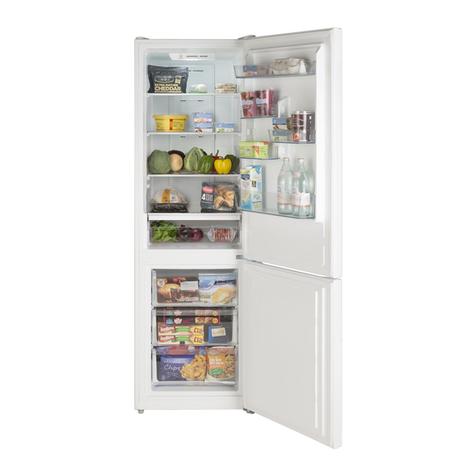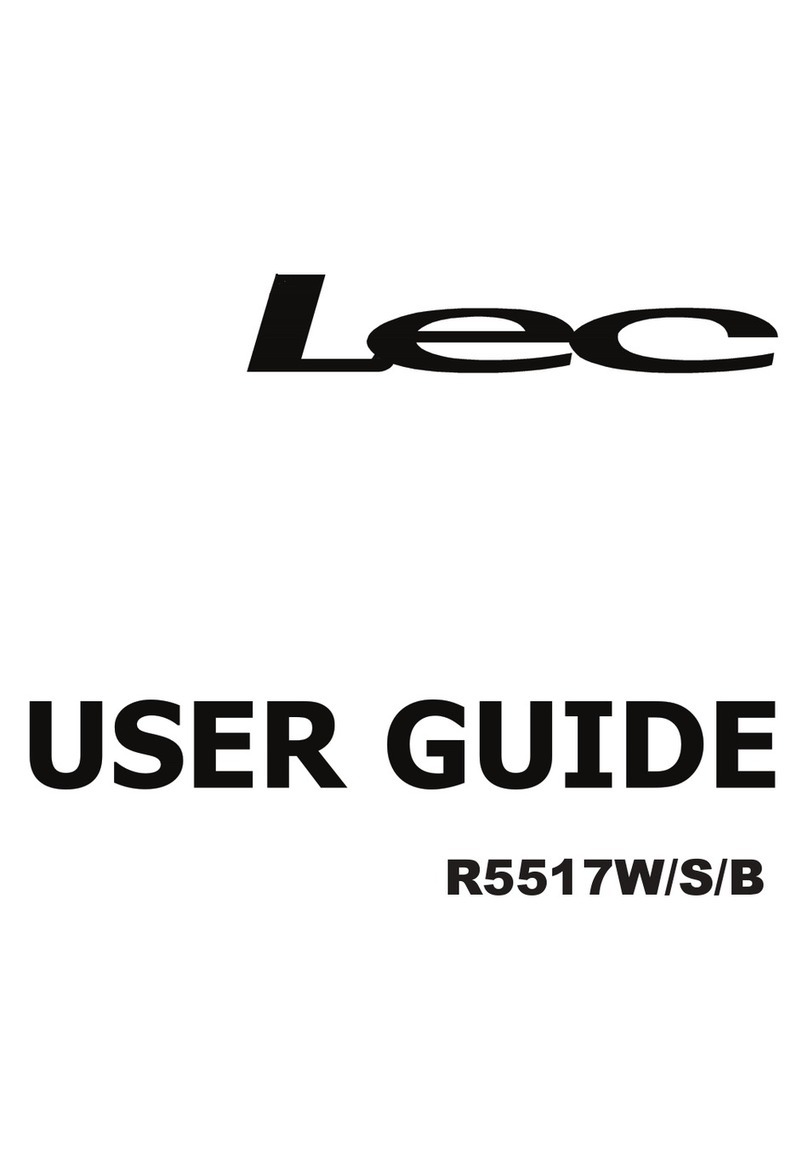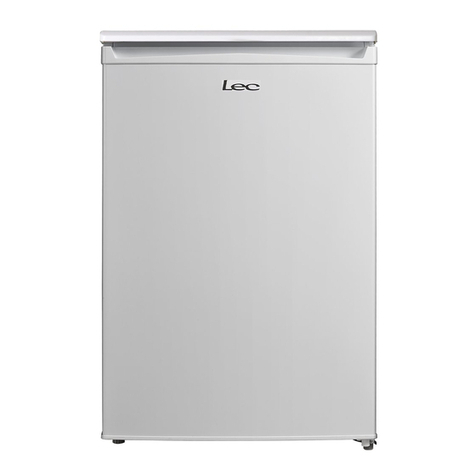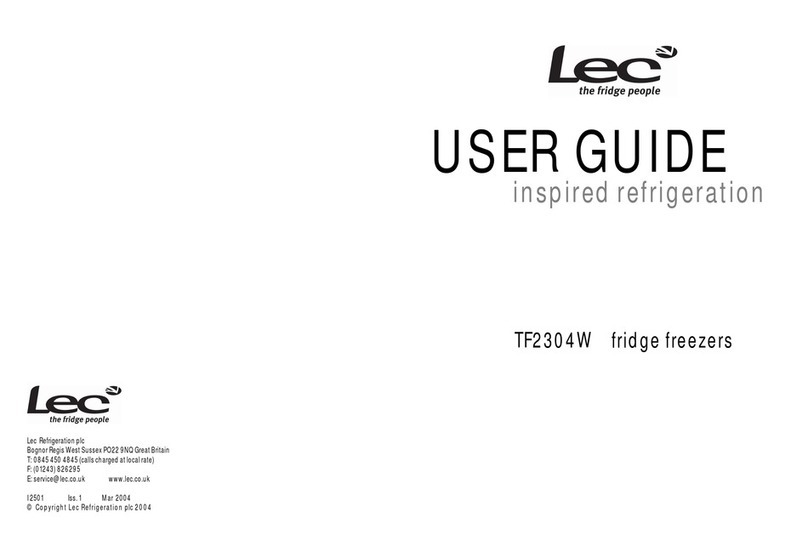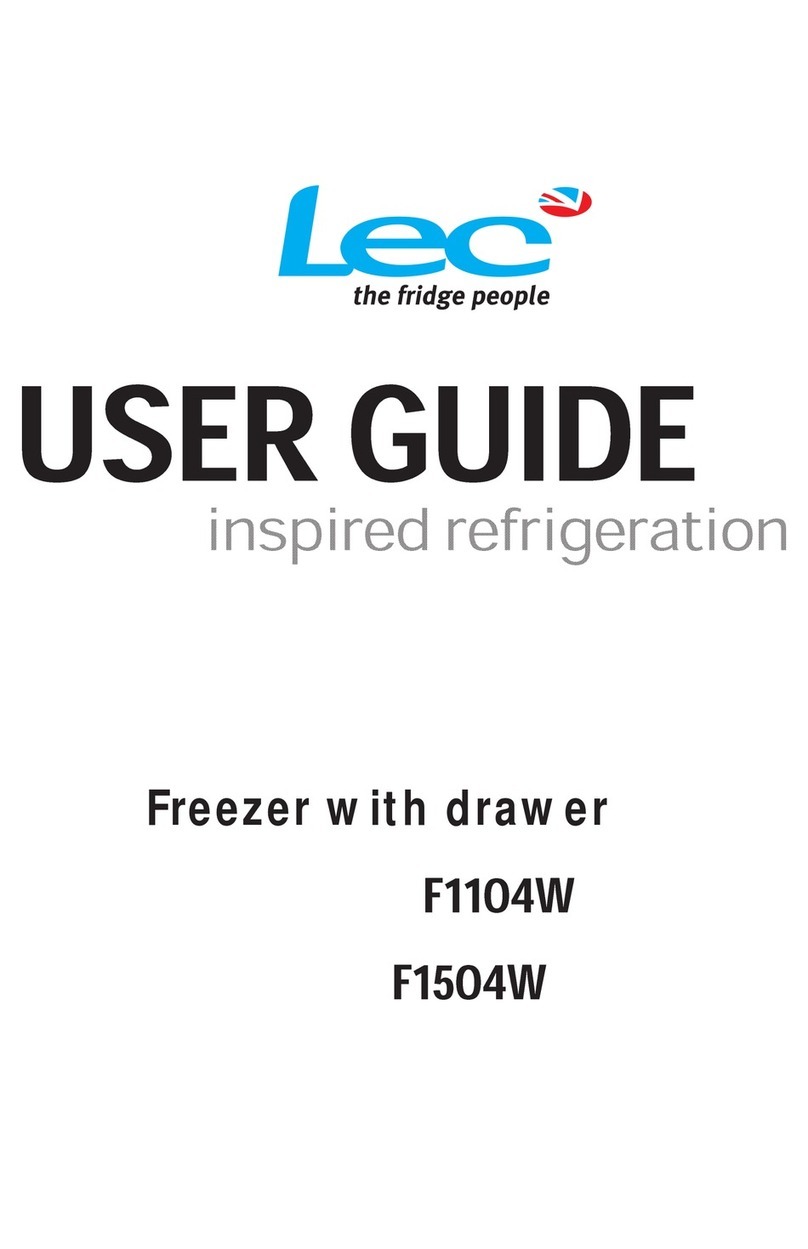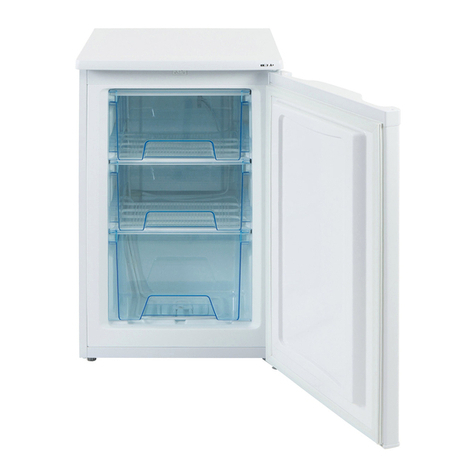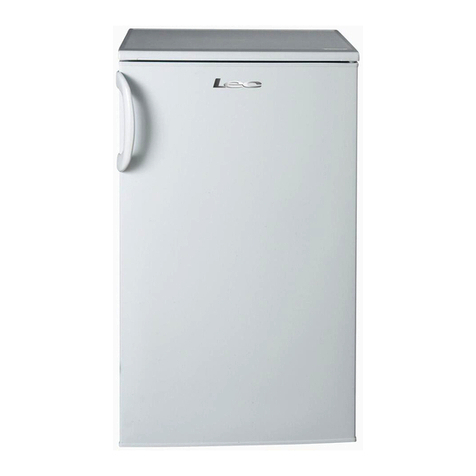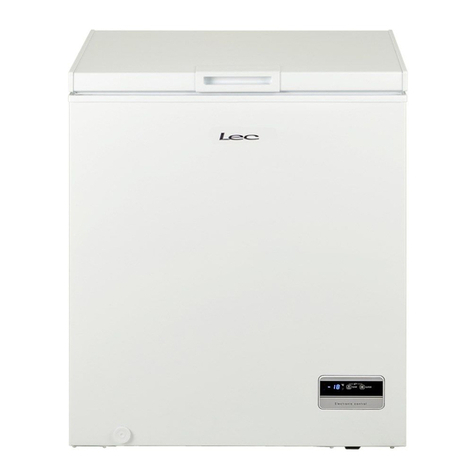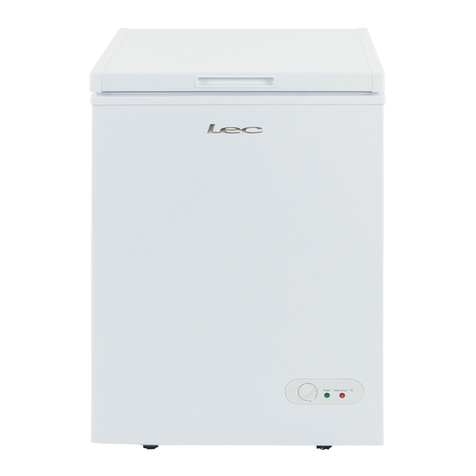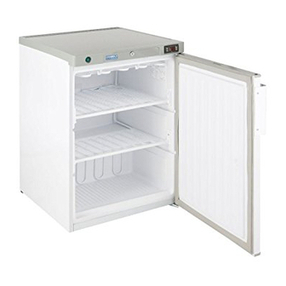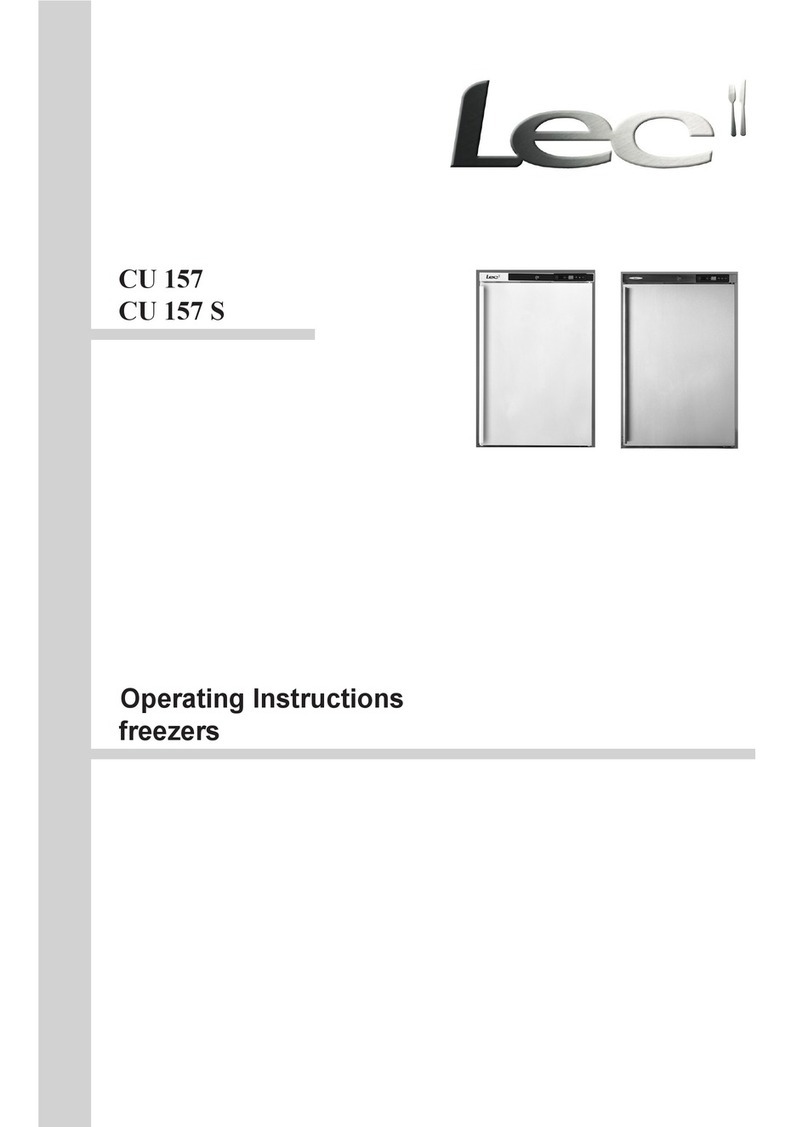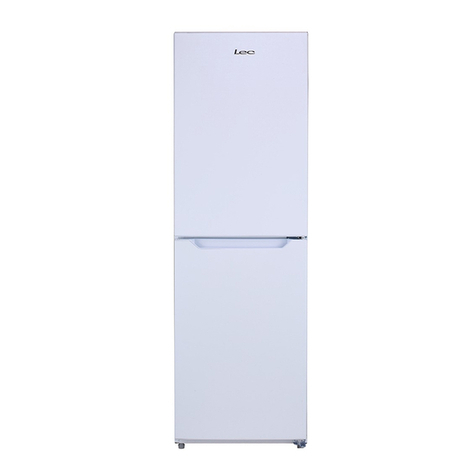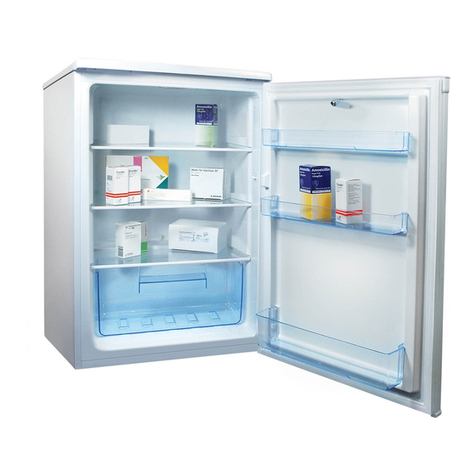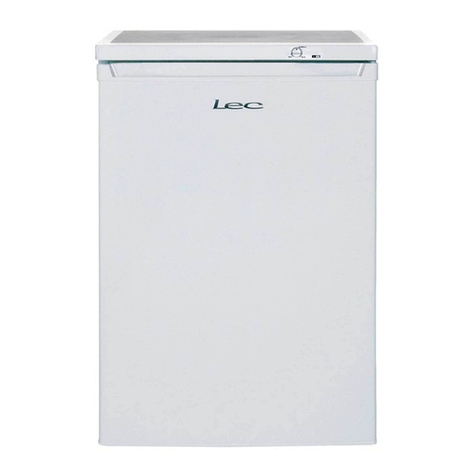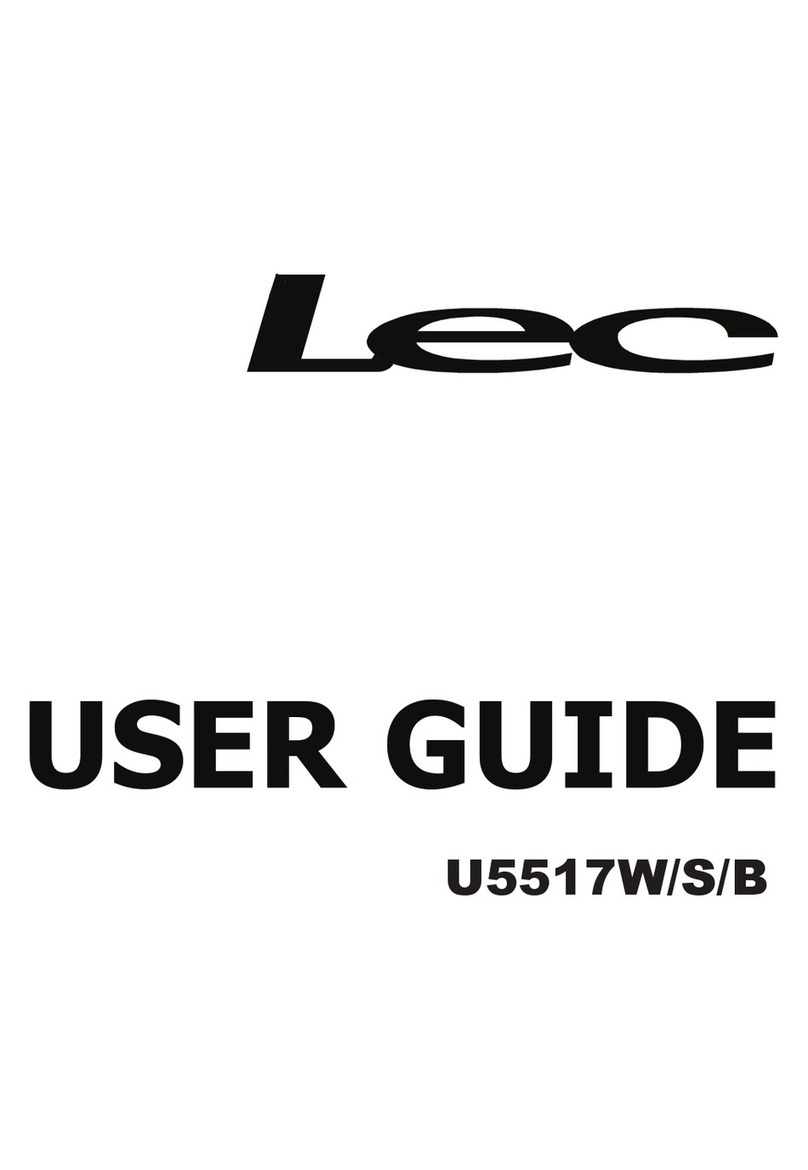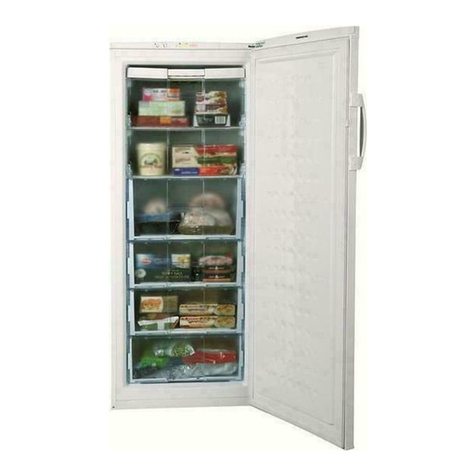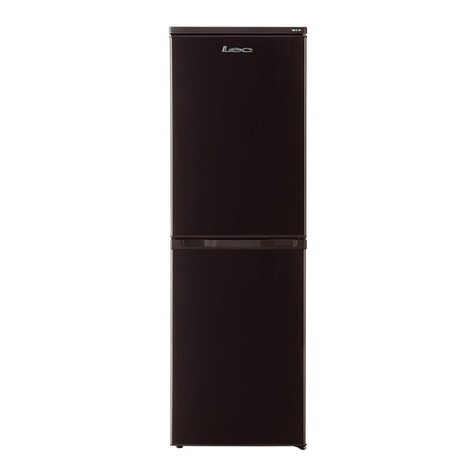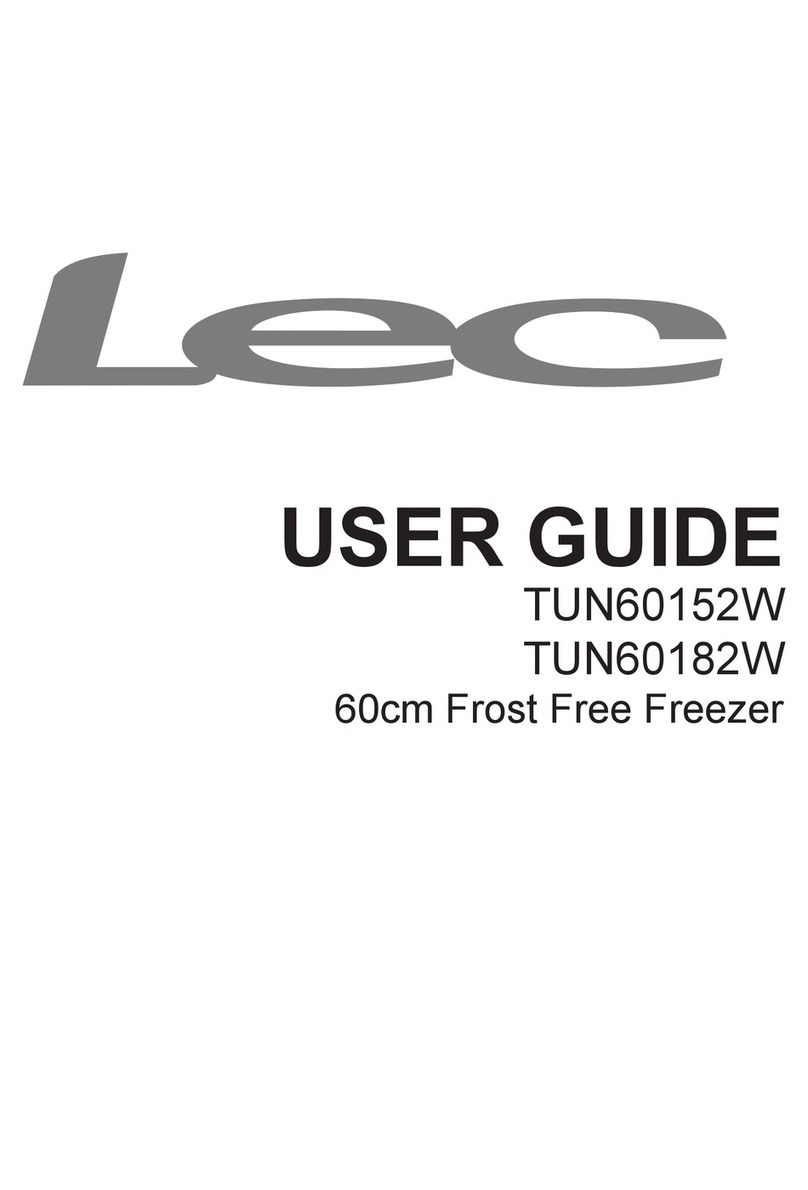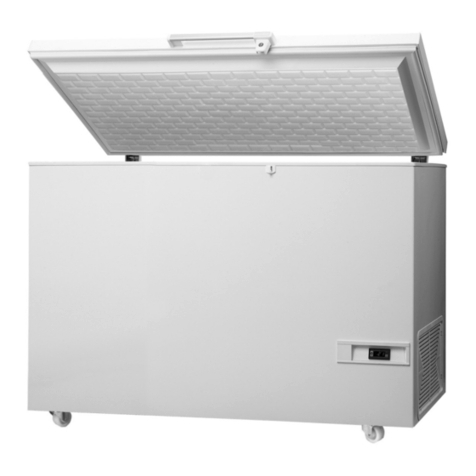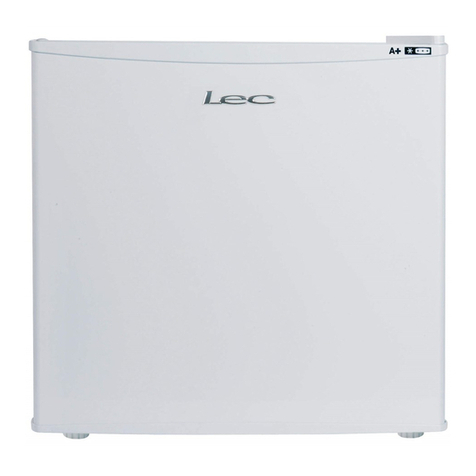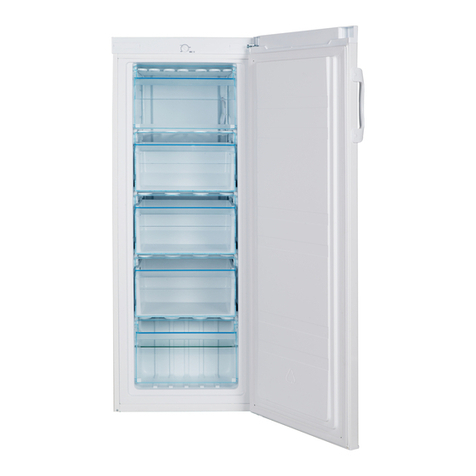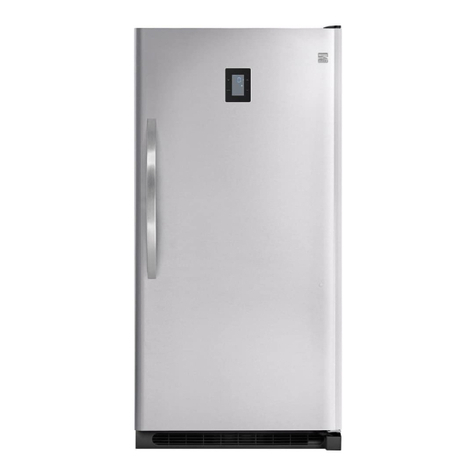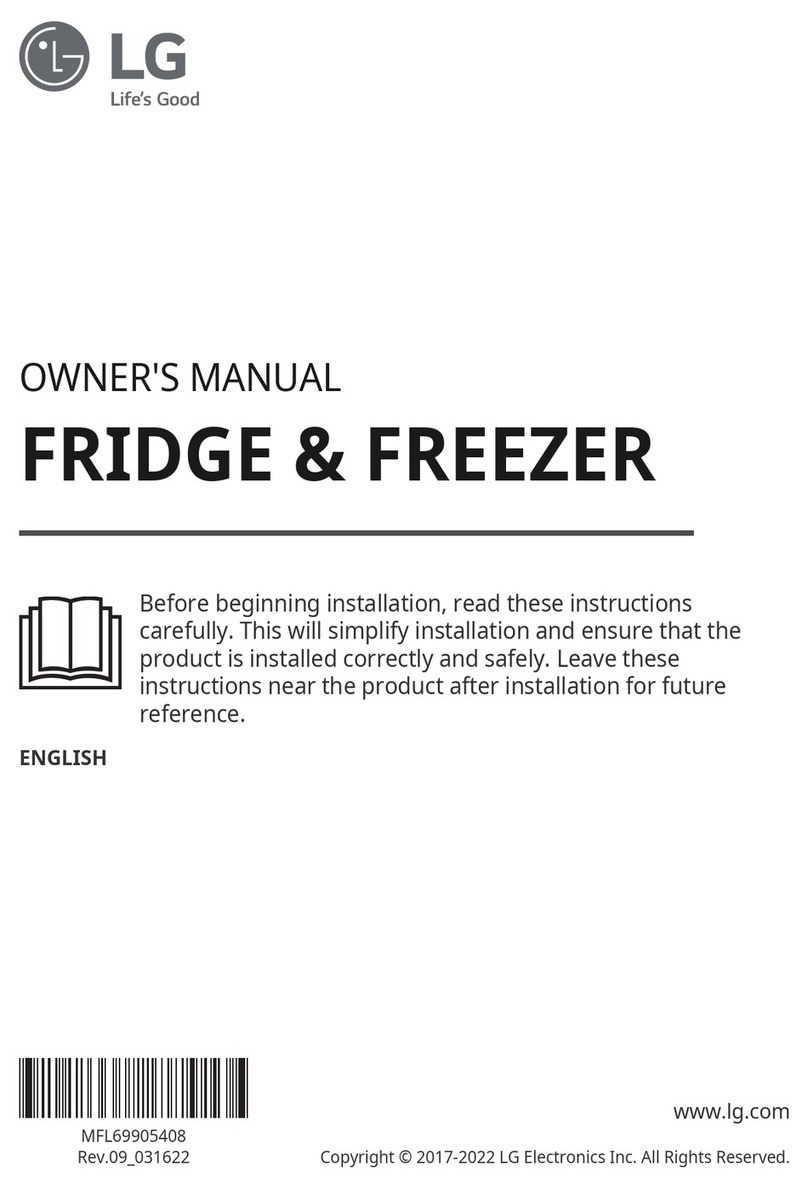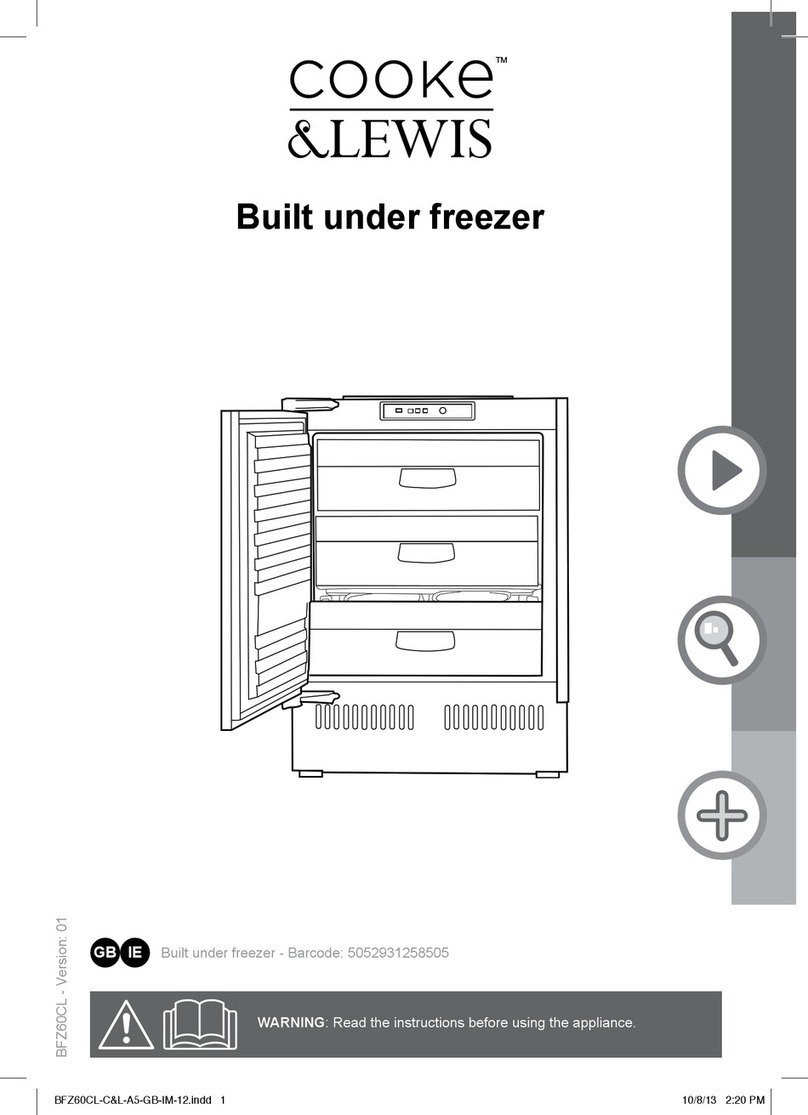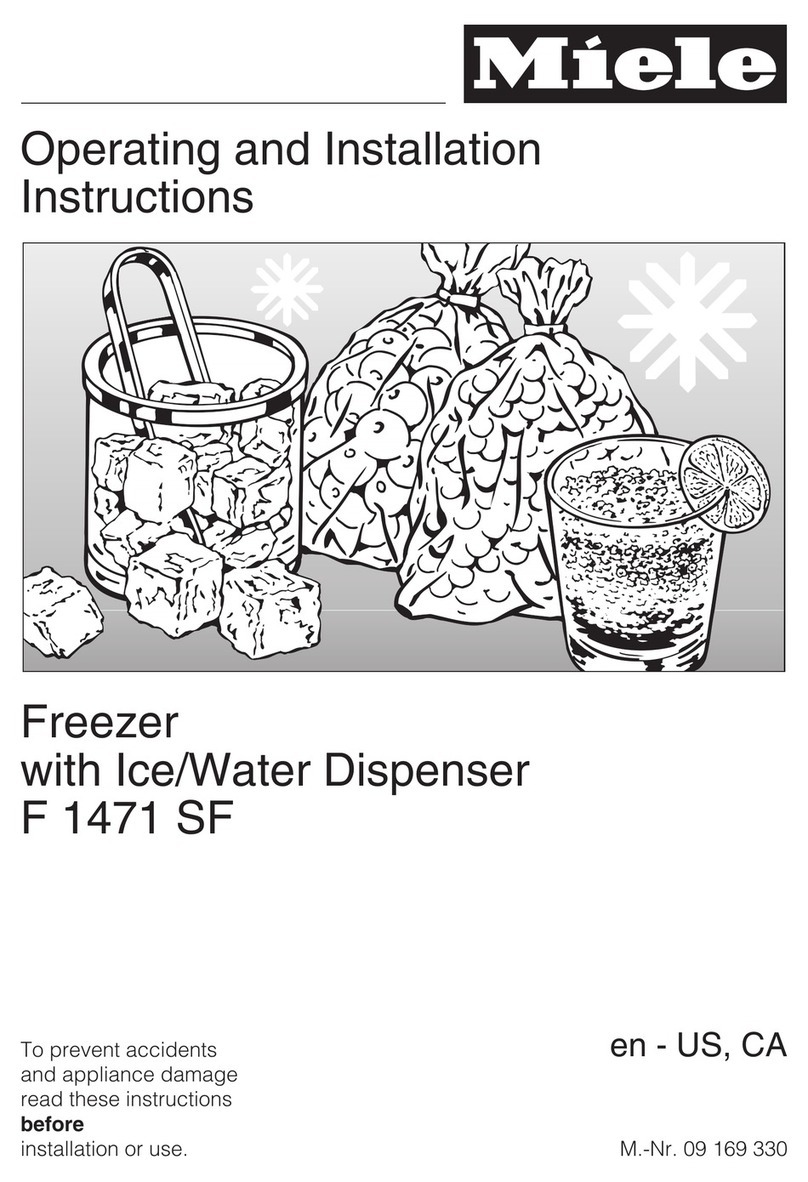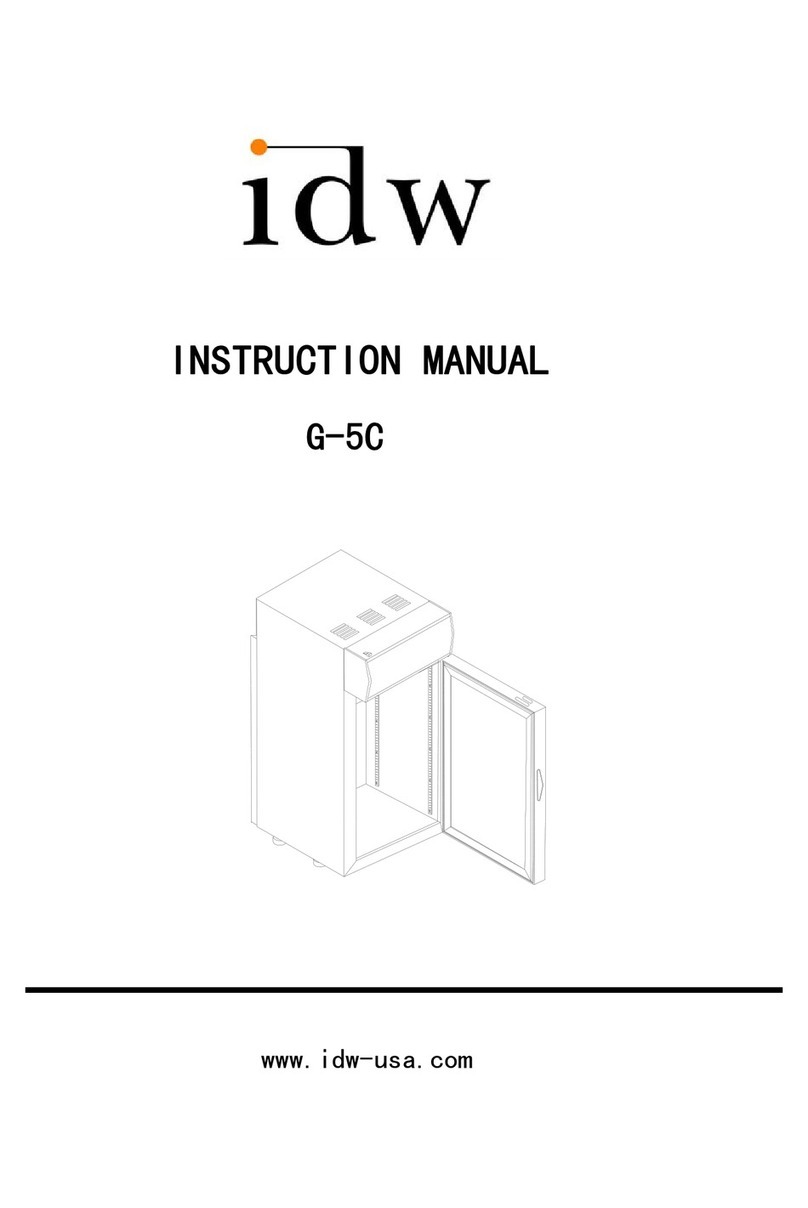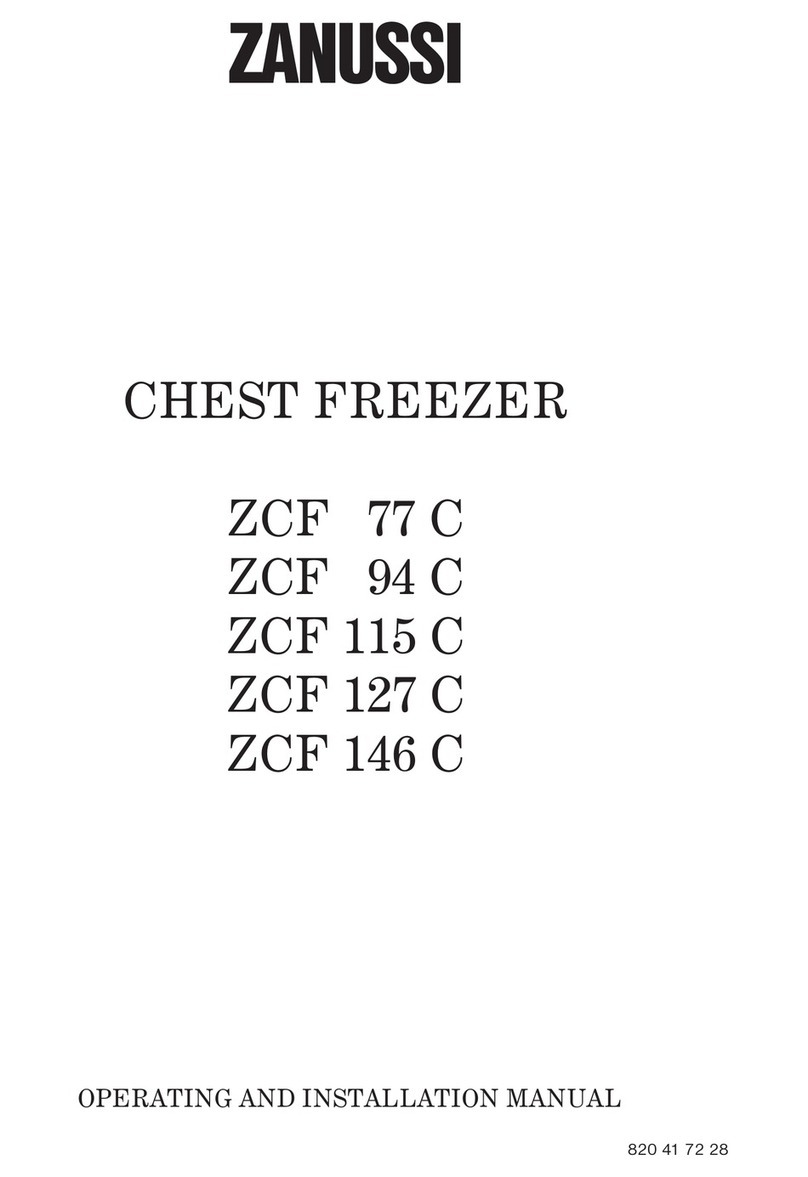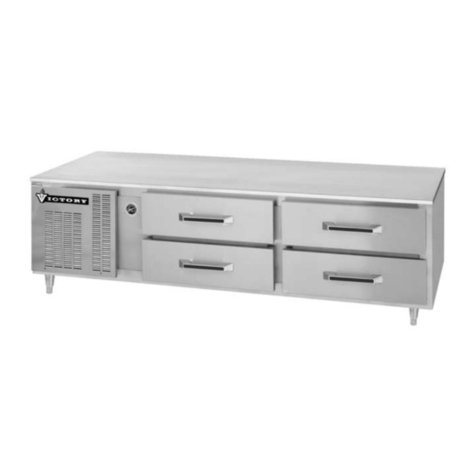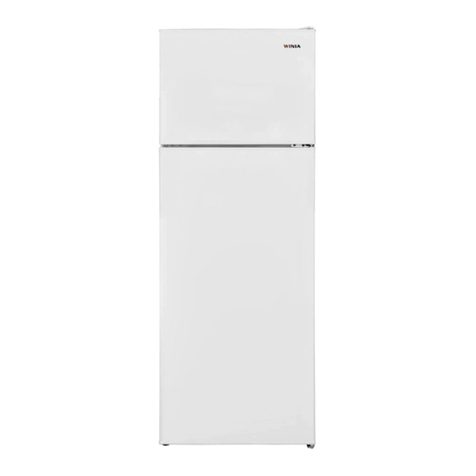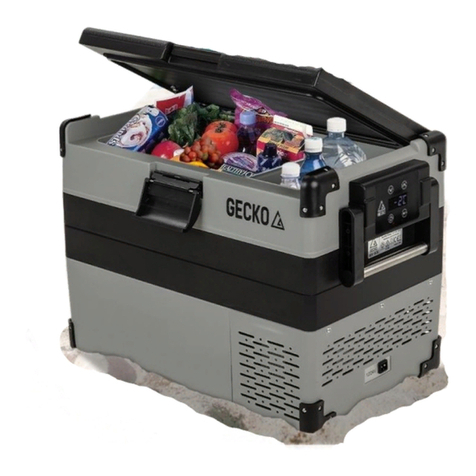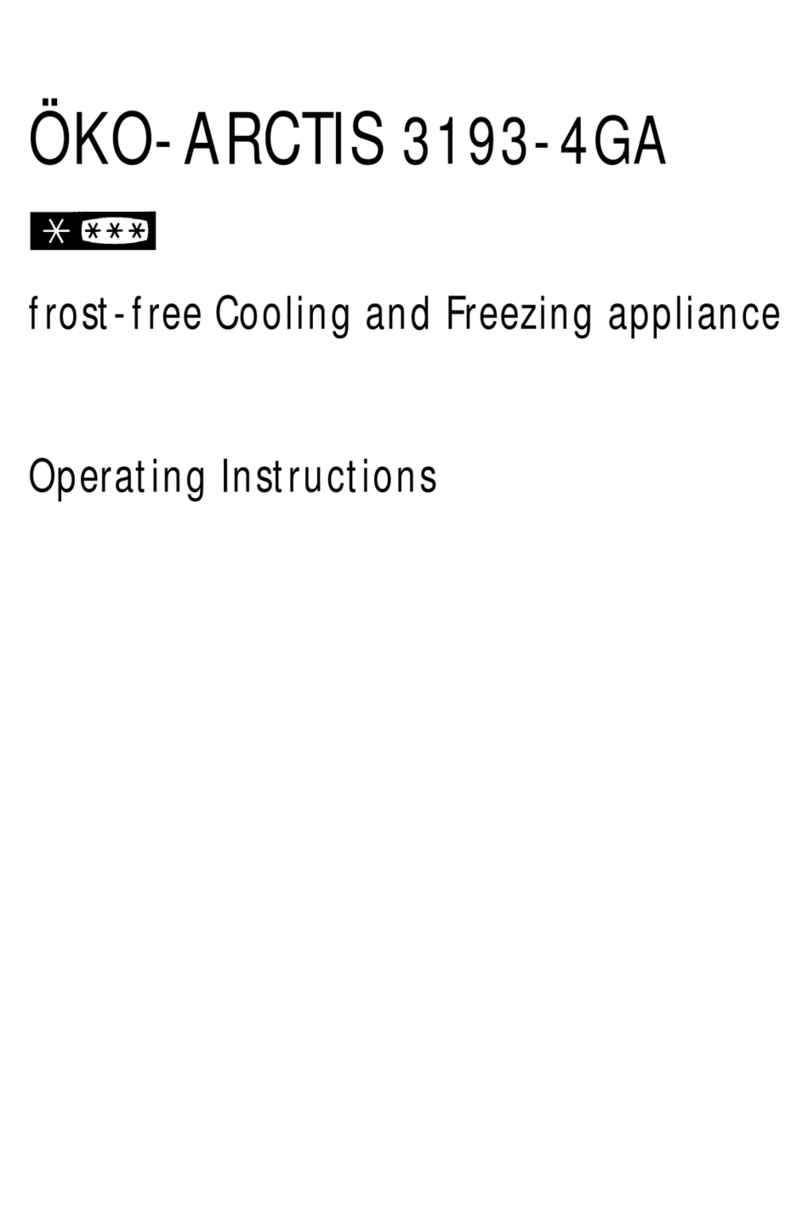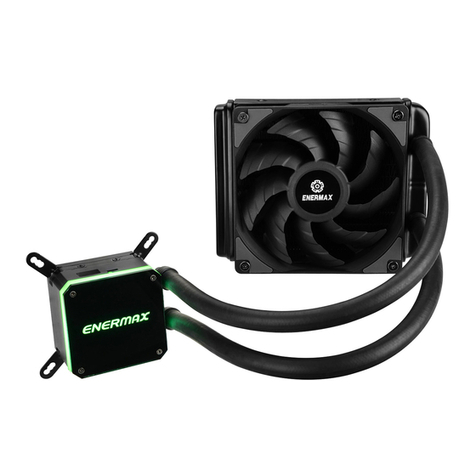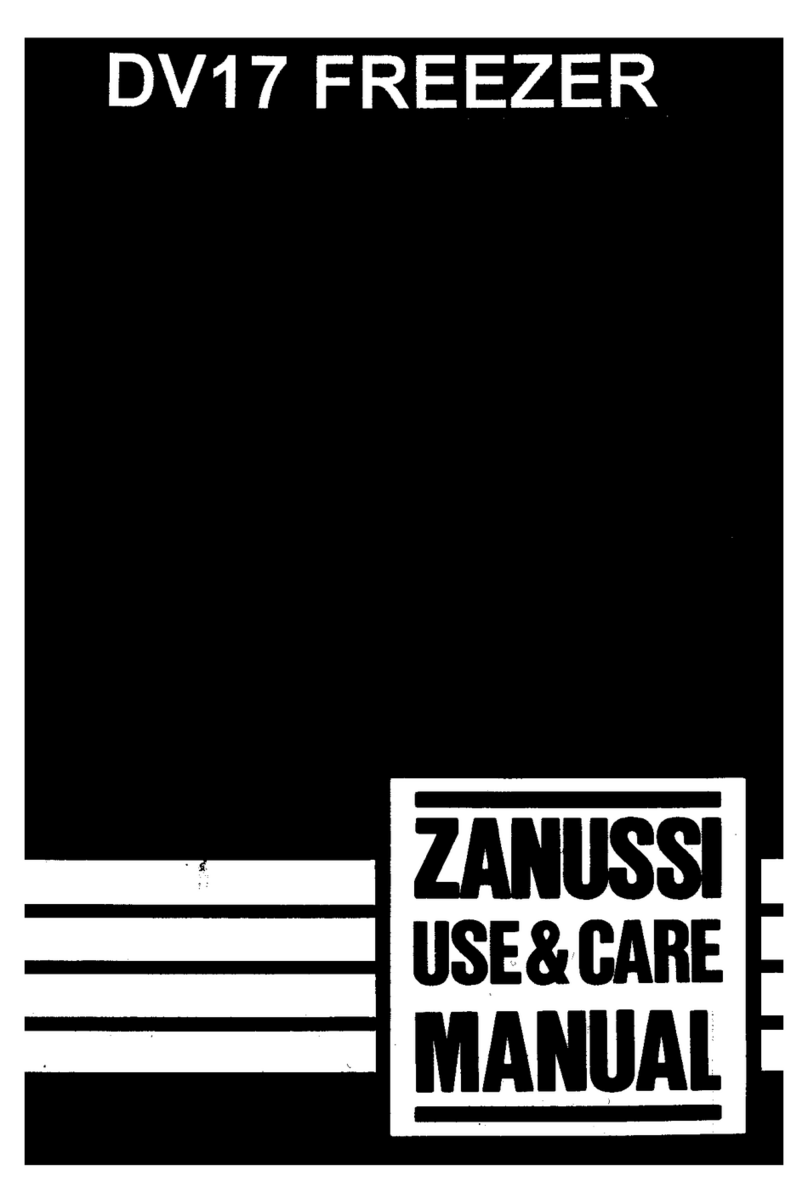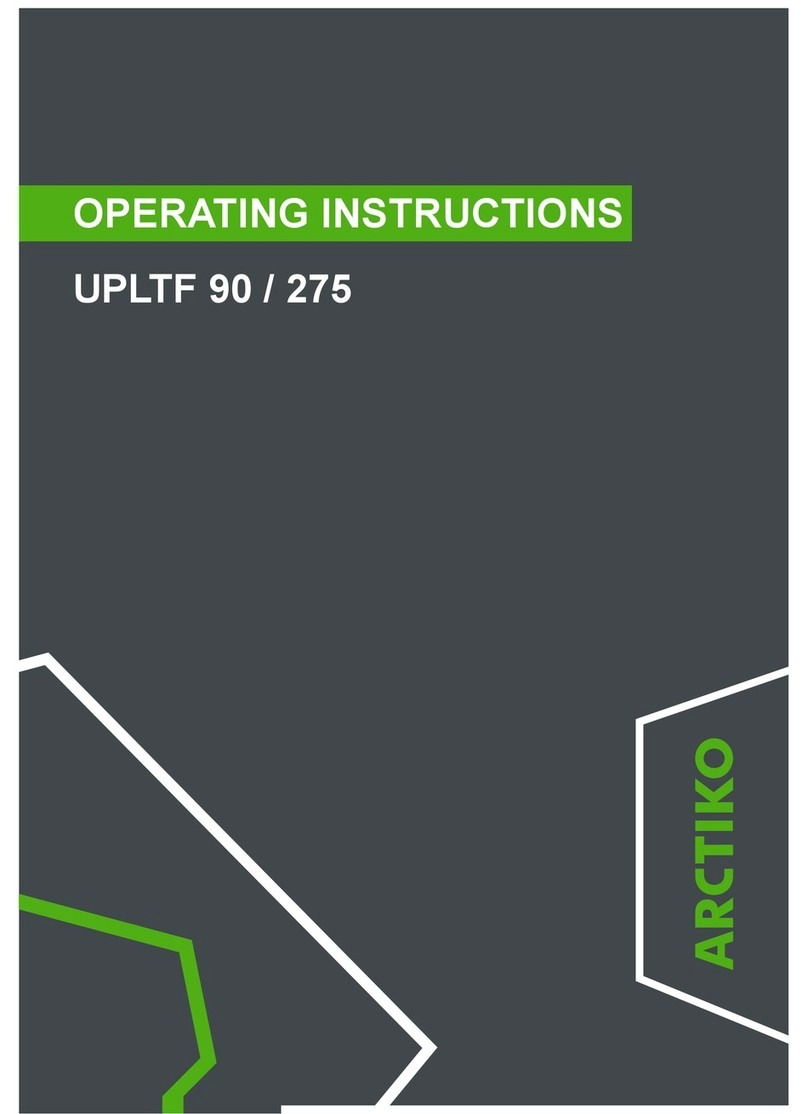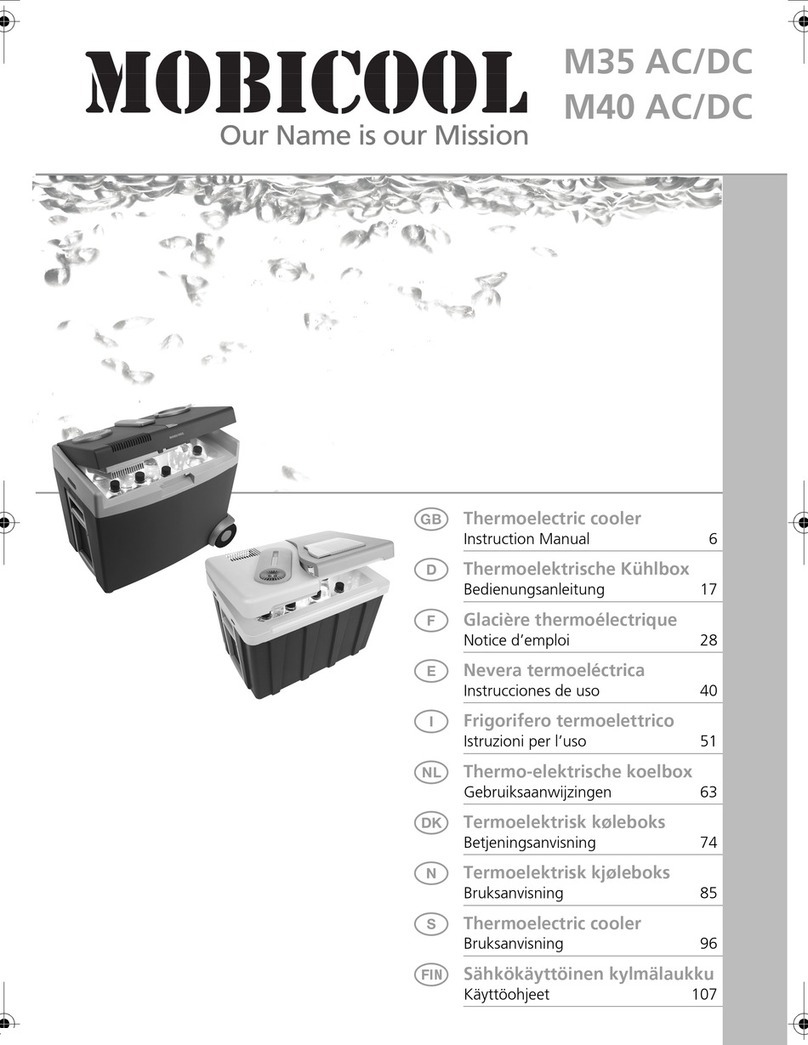Lec+ CU 357 User manual

Operating Instructions
freezers
CU 357
CU 357S

2
GB/IE
The freezer was developed taking the different storage requirements of food items
into consideration. The freezer is equipped with freezing drawers in various sizes
giving room to all the little things as well as a big turkey.
To ensure that you get as much joy out of your freezer as possible, it is important
that you become familiar with the freezer functions and know how to use the ac-
cessories. Please read the instructions for use carefully before setting up and using
your freezer.
As these instructions apply to several freezer models, the equipment may vary from
model to model.
Before using the freezer
On receipt, check to ensure that the freezer has not become damaged in transport.
Transport damage should be reported to the local supplier before the freezer is put
to use.
Before lling the freezer with items of food, the freezer interior should be cleaned
with lukewarm water containing a mild detergent. Use a soft cloth. If the freezer has
been stored in cold surroundings (colder than +5°C), it must be allowed to stabilise
for at least 2 hours before being switched on.
Read more about setting up, building in, and installation on pages 12 and 13.

3
GB/IE
Contents
Important information
Transporting and moving the freezer 4
If the freezer is to remain unused for a time 4
Old refrigerators/freezers 4
Disposal 4
Product description 5
Using the freezer 6
Using the freezer and accessories 7
Defrosting and cleaning
Manual defrosting 8
Cleaning 8
Setting up and installation
Where to place the freezer 9
Electrical connection 10
Mainstenace and Service 11
Changing the door hinging 12
Spare parts 13

4
The freezer contains the environment-friendly, non-ozone-depleting refrigerant
R600a. As R600 is a ammable gas, it is important to avoid damage to the refriger-
ating circuit during transport and installation. If the refrigeration circuit is damaged,
avoid using a naked ame in the vicinity of the freezer and connecting power to
the cabinet. Also make sure that there is good ventilation in the room. If you are in
doubt, please con¬tact your supplier.
Transporting and moving the freezer
The freezer must always be moved in the vertical position. The freezer must not be
tilted more than approx. 40°. If the freezer has been tilted more than 40°, the power
supply must not be con¬nected until the appliance has stood upright for at least two
hours.
If the freezer is to remain unused for a time
If the freezer is to remain unused for a period of time, e.g. during refurbishment
work, switch it off by pressing the switch O(1) and disconnecting the power
supply to the cabinet and possibly pulling the plug out of the wall socket.
Empty, defrost and clean the freezer. Leave the freezer door slightly ajar. This will
prevent bad smells in the cabinet.
Warning
This appliance is not intended for use by persons (including children) with reduced
physical, sensory or mental capabilities, or lack of experience and knowledge, unless
they have been given supervision or instruction concerning use of the appliance by a
person responsible for their safety.
Children should be supervised to ensure that they do not play with the appliance.
Old refrigerators and freezers are often tted with complicated latches that can only
be opened from the outside. If you have an old unit like this stored away some-
where, or if you scrap it, remember to destroy the latch to prevent chil¬dren from
being exposed to danger by getting locked inside the unit.
Note! Please also observe the environ¬mental rules on disposal.
Disposal
If a freezer is to be disposed of, this must be done in an environmentally correct
way, in accordance with current rules on disposal.
Please observe the environmental rules on disposal. There might be special re-
quirements/conditions to be observed.
Information on disposal can be obtained from:
- Your supplier
- Authorities (the local council, Ministry of the Environment, etc.)
GB/IE
Important information

5
GB/IE
Product description
The freezer is intended for use in a working kitchen environment. It is designed for
temperature class SN in accordance with European standard EN 153. The appliance
is equivalent to a four-star freezer approved for freezing down and storing frozen items
of food. a room temperature of +10°C to +32°C.
Please nd on the product nameplate the interval of ambient temperature for which
this product is designed to have the best performances
Class Symbol Ambient Temperature
Range °C
Extended
Temperate SN + 100C to + 320C
Temperate N + 160C to + 320C
Subtropical ST +180C to + 380C

6
GB/IE
Using the freezer
4
1. User interface
1.1 Button (1) ‘ I ’ (ON /OFF) – pressed for about 2-3sec – switches on and switches
off whole product's controlling,
1.2 Button (2) ‘lock’ – pressed for about 2-3sec – blocks the keypad – does not refer
to button (1) driver switch off,
1.3 Green LED diode (3) – indicates active blockade function,
1.4 ‘-‘ minus diode (4) – indication of temperatures below zero,
1.5 LED display (5) –temperatures, service parameters and alarm symbols display,
1.6 Button (6) ‘▼’ - minimum temperature preview or parameter value decrease,
1.7 Button (7) ‘▲’ – maximum temperature preview or parameter value increase,
1.8 Button (8) AUX – functional button,
1.9 Green LED diode (9) – indication of temperature programming mode – manual
switch of AUX output.
2. First start up
After switching on, the driver activates the auto-test procedure. During the rst se-
cond, it displays dots, program version during next second, dots during the third
second and then switches to normal work mode.
During normal work mode, the display shows cooler temperature. In case of an alarm,
it displays E with alarm number.
If the driver is switched off, LED diodes are turned off and the display shows two
horizontal lines.
The display indicates temperature of the cooler-freezer within the range of –30oC to
+30oC.
3. SET UP
3.1 Temperatures programming (set range : from -18’C to -25’C) :
- short pressing of (8) AUX button – entering/leaving set temperature programming

7
GB/IE
mode. Buttons (6)‘▼’ and (7)‘▲’ are used to adjust settings. Diode (9) blinking indi-
cates active function of set temperature programming; if button (6)‘▼’ or (7)‘▲’ is not
pressed, after 10 seconds since the last pressing of (6)‘▼’ or (7)‘▲’ the driver will
leave the described mode.
3.2 Deleting recorded exceedance (MIN / MAX) :
- pressing buttons (6)‘▼’ and (7)‘▲’ for about 2-3sec results in deleting saved min/
max temperatures and saving current temperature in the driver’s memory.
4. Alarms
A displayed alarm should be saved even if the reason of the alarm does not exist
anymore. Alarms are not saved after switch off (lack) of energy.
E1 – cooler sensor malfunction – if the reason of the alarm still exists, it can not be
deleted,
Hi – maximum set temperature of the product
Lo – minimum set temperature of the product exceeded
Pressing a random button deletes the sound signal as well as Hi and Lo indications.
E1 deletion by means of turning off the on/off driver after prior elimination of a malfunction.
Using the freezer and accessories
The whole of the freezer can be used for freezing down and for the long-term storage
of frozen items of food. In addition, the freezer comes equipped with a freezing tray
for berries, etc.

8
GB/IE
Manual defrosting
It is recommended to defrost the freezer
at least once a year.
Stop the compressor by pressing button
O (1) and disconnecting the power supply
to the freezer.
Remove all items from the freezer. To
keep them as cold as possible dur-
ing defrost, they can be placed in the
re¬frigerator. Place a bowl containing hot
water (not boiling) in the freezer.
Pull out the drain spout (10) and place
a bowl under it to receive defrost water.
When the ice has melted, clean out the
freezer using water and a mild washing-up
liquid. Dry the freezer with a soft cloth.
Warning
10
Defrosting and cleaning
It is dangerous to use electrical appara-
tus, knives or sharp objects to accelerate
defrost.
Cleaning
Stop the compressor by pressing button
O (1) and disconnecting the power sup-
ply to the freezer.
The freezer is best cleaned using a weak
soap solution and a soft cloth. Never use
cleaning agents that scour. Clean the
sealing strip around the door regularly
to prolong its life. Use only clean water
for cleaning the sealing strip. The plastic
parts of the cabinet cannot withstand
boiling water (max. 85°C). It is important
to prevent water from getting into the
control panel.
Remove dust and threads from the
compressor compartment at the back of
the freezer with a vacuum cleaner. Con-
nect the current and restart the freezer
by pressing start button (1).
Cleaning of doors in stainless steel or aluminium
Stainless steel or aluminium doors on Lec products can, with advantage, be
cleaned with a spray and a soft cloth. There are a number of different spraying
agents for this purpose on the market.

9
GB/IE
Setting up and installation
Where to place the freezer
For safety reasons the freezer must not be installed outdoors; it must be placed in a dry
room. Never place the appliance close to sources of heat such as cookers or radiators,
and avoid placing it in direct sunlight. The surface on which the appliance is placed must
be plane. Do not use a frame or similar. The small wheels mounted at the rear of the
freezer make it easy to place it in the required position.
The freezer can stand freely on the oor or be built into a kitchen element or a refrigera-
tor element.
It is important that the appliance stands completely level and that there is good air
circulation over, under and around it. The freezer can be adjusted by turning the four
adjusting screws on the plinth. After adjustment, the feet and the two rear wheels must
be in contact with the surface on which the appliance stands.

10
GB/IE
Electrical connection
The appliance is intended for connection to alternating current. The connection values
for voltage (V) and frequency (Hz) are given on the nameplate in the cabinet.
Power must be connected via a wall socket with switch. The wall socket should be
easily accessible.
All earthing requirements stipulated by the local electricity authority must be observed.
The cabinet plug and wall socket should then give correct earthing. If in doubt, contact
your local supplier or an authorised electrician.
WARNING – This appliance must be earthed
The exible cord (mains lead) tted to this appliance has three cores for use with a
3-pin 13-amp plug. If a BS 1363 (13-amp) fused plug is used, it should be tted with
a 13-amp fuse.
IMPORTANT
The cores in this mains lead are coloured in accordance with the following code:
GREEN-AND-YELLOW: EARTH
BLUE: NEUTRAL
BROWN: LIVE
These colours might not correspond with the colour markings identifying the terminals
in your plug.
Note:
First connection to the mains.
The appliance provides information about the higher temperature (Hi alarm ) till the
moment of cooling.
The alarm is signalised by a sound signal and “Hi” caption on the display.
To cancel the alarm, press any push button.
Until the moment of cooling, the alarm is repeated every 15 minutes.
Such an operating mode is normal until the required temperature settings are
reached.

11
GB/IE
Maintenance and Service
The sounds that can be heard during normal operation:
• clicks - heard when the control activates or deactivates the compressor
• buzz - the sound of the compressor intensely working shortly after its activation
• crackles and clatter - coming from the cooling system, caused by expansion and shrin-
king of parts due to temperature differences before and after compressor activation
• rustle, gurgle, whistle - coming from the cooling system piping, caused by the co-
olant owing inside.
● Expanding and shrinking of parts caused by temperature changes causes crackling
sounds that may be heard
Easily corrigible sources of noise:
● noise caused by the appliance positioned not level - adjust the position with the
adjustable turn-in front feet.
● rubbing the adjacent piece of furniture - move the refrigerator a bit.
● creaking of the drawers and shelves - take out and put back the drawer or shelf.
Problem
a break in the opera-
tion of the freezer
the freezer compressor
operates
continuously
Reason
A gap in the electric system
circuit
The compressor hardly ever
activates
The ambient temperature is
above +32°C
the freezer door is opened to
often
Air circulation at the back of the
appliance hampered
Solution
make sure there is electricity
in the socket by plugging in
another electric device, such as
a night lamp,
make sure the ambient tempera-
ture is not below +10°C
the appliance is designed for
operation in temperatures from
+10°C to +32°C,
decrease the frequency of
opening the door
place the appliance according to
the recommendations

12
GB/IE
See gures 11-14 for instructions on how to change the door hinging.
The fridge must be off and empty.
- tilt the appliance by 45 degrees backward. Thereby, the lower hinge becomes accessible.
- use cross screw driver to unscrew the three lower hinge bolts (see g. 11).
- remove the door and set aside. Make sure the door cannot fall.
- use screw driver to remove the pin below the control panel at the right side of the
fridge. Screw it fully into the hole at the left side (see g. 12).
- unscrew the two lower bolts. Remove the plug from the lower hinge socket with a
screw driver (see g. 13).
- t the fridge door back, insert the top pin into the door slat.
- insert the hinge pin into the lower slat. Screw the hinge fully with a cross screw driver.
- unscrew the door handle (see g. 14).
- t the handle to the opposite side of the door.
- start the appliance according to the relevant instructions.
12
13
14
11
Changing the door hinging

13
GB/IE
Spare parts
Glen Dimplex Professional Appliances
(A division of GDHA)
Stoney Lane
Prescot
Merseyside
L35 2DX
Customer service
Telephone number: 0870 458 4386
Fax : 0870 458 4192
Service

14
GB/IE

15
GB/IE

IOAL-723
(11.2007/2)
This manual suits for next models
1
Table of contents
Other Lec+ Freezer manuals
